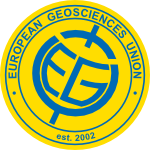Related Questions
- What do you think there is/are in the Mariana Trench?
- Oceans are very big and vast, can they really be threatened by human action?
- In your opinion, is the sentence ,, we know more about space than we do the ocean'' true ? How can we change this ?
- How can we observe what the surface of the ocean floor looks like when it is so deep ?
- Hi. This might be a little silly, but since ninety-five per cent of the ocean is unexplored, what's your opinion of
- How , after a collision with another planet , Terra left with a huge ocean and a mega- continent ? Why Terra wasn't a
- Do you think in the near future will be able to filter the water in the ocean so we can use?
- Does the volcanic ash dissolve in water (oceans,seas) ? If not, does this mean that the marine life can be affected ?
- What do you think is the type of energy that emerges while volcanoes are erupting? What unit is used to measure them?
-
Recent Questions
- Hello. I wanted to ask…what does paleomagnetism particularly study? :)
- Do you expected to be one of the finalists?
- Why is water vapor only in the troposphere part?
- 1.How did Earth and other planets form?-su yaşin
- Do you think the accumulation of tension can be prevented in order to reduce the intesity of earthquake? (1 Comment)
Recent Comments
- Thanks from your winner - Andi! (2 comments)
- Do you think the accumulation of tension can be prevented in order to reduce the intesity of earthquake? (1 comments)
- If there is an earthquake on Jupiter, Mars, Venus etc. will it still be called EARTHquake ? (1 comments)
- How do you measure the depth of an ocean ? (2 comments)
- What do you think of music like Ed Sheeran's songs? (1 comments)



Hi!
Well, there are a few techniques used for this.
Historically, before scientists developed new techniques, the depth of the ocean was actually measured by sending a rope with marks on it (all with the same distance between each other) from a ship to the bottom of the ocean and then counting how many marks had gone into the water. So a bit like using a ruler! Crazy, isn’t it?
Of course in most cases this wasn’t very accurate…
Now the most common way to measure depth is by using SONARS mounted on ships. These instruments send a sound wave from the surface to the bottom of the ocean. Then they use time that it takes for the sound wave to be transmitted back to calculate what the depth is. The instruments can do this because we know what is the speed of a sound wave when it’s travelling in the water.
Sometimes more sophisticated types of SONARs (echosounders) are used for specific very deep areas. For example, scientists used these to get an accurate mapping and depth estimate in the Mariana Trench (in the Pacific Ocean, which is the deepest point in the global ocean) and they concluded that the depth in the deepest point there was 10,994 meters (with an accuracy of plus or minus 40m, which is incredibly precise!).
Another way to measure depth is to use satellite imagery. This has been used to calculate the mean depth (and also the volume) of the entire ocean. The satellites that orbit in space can be used for this.
First, the scientists have measured the height of the satellite above the Earth’s surface (assuming that it’s perfectly flat, even if it is not).
Then, the satellite measures the height above the ocean surface (also in this case by sending out a pulse and measuring how long it takes for it to come back).
Finally, the difference between these two gives you the height of the ocean surface. These calculations are adjusted based on observations and measurements of tides and waves.
On a ship, apart from using the SONAR, the depth is also measured whenever an instrument called CTD (conductivity, temperature, depth) is sent straight down to the ocean floor. This instrument measures temperature and salinity and can also collect water samples while it’s coming back to the surface using big bottles. There are a couple of pictures of that on my profile, because we were using this instrument very often when I was on the research cruise in the North Atlantic.
0